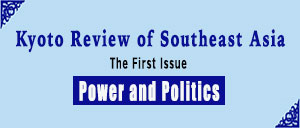
The Price to be Paid:
The Ethnic Chinese Encounter in Indonesia
Harga yang Harus Dibayar: Pergulatan Etnis Cina di Indonesia
I. Wibowo, editor
Jakarta / Gramedia Pustaka Utama dan Pusat Studi Cina / 2001
The downfall of the Soeharto regime in May 1998 has been accompanied by the rise of identity politics. Soon after coming to power in 1966, Soeharto reversed the pluralistic politics which had been promoted by Soekarno, and his New Order systematically subordinated ethnic, race, and religious identities. At the same time, Chinese-Indonesians were particular targets of popular and state hostility, due to allegations that the People’s Republic of China was implicated in the September 1965 aborted coup. Under such difficult circumstances, right-wing Chinese-Indonesian politicians, most of whom happened to be Catholic and closely allied with certain rightist army generals, advanced the policy of marginalizing and excluding the Chinese from public life. Subsequently, a small number of well-connected Chinese became incredibly wealthy under Soeharto’s patronage, but Chinese-Indonesians in general, with no political representation, became the enduring target of extortion by the state and its apparatus.
Tragically, the downfall of Soeharto brought another round of anti-Chinese persecution, the worst in post-Independence Indonesian history, characterized by harsh attacks, harassment, looting, and rape in Jakarta, Solo, Medan, and other cities. This occurrence refutes the theory of “assimilation” advocated by the Chinese Right in the early days of the New Order regime. In fact, the origin of the so-called “Chinese problem” can be traced back to 1966 and the imposition of the assimilation policy. The policy itself is peculiar and contradictory: it attempts to incorporate the Chinese community into Indonesia by encouraging and even forcing people to stamp out their “Chineseness” in such ways as adopting Indonesian-sounding names. But at the same time it has placed the Chinese in an identity trap, actively preventing assimilation through policies of discrimination and separation.
The latest wave of violence has awakened the Chinese-Indonesian community to contest its marginalized status after being repressed for more than three decades. This development is supported by recent political reforms that allow the emergence on the political stage of previously invisible or subordinated social groupings ranging from ethnic groups to organized Islam. Harga yang Harus Dibayar: Pergulatan Etnis Cina di Indonesia (The price to be paid: The ethnic Chinese encounter in Indonesia) documents recent reflections on the problem identity of Chinese-Indonesians.
In the opening essay, Wang Gungwu (“Ethnic Chinese: The Past in their Future”) suggests that overseas Chinese have two choices: either admire Chinese history or accept the national history of the country in which they have made their home. Most Chinese-Indonesians have chosen to accept Indonesian national history and forget Chinese history; however, this political determination seems futile in light of the last three decades. The Soeharto regime essentially repressed Chinese identity, but at the same time maintained it as a scapegoat to be blamed or even attacked as necessary. The disastrous political events of May 1998 depict how easily a repressed identity can be manipulated.
But despite political discrimination and marginalization, most Chinese-Indonesians were grateful to the Soeharto regime for providing a stable business environment. Thus even as anti-Chinese riots began to break out in the provinces in early 1997, the Chinese in Jakarta believed they would be safe, since Jakarta was always well guarded by the army. It is understandable then that the severe anti-Chinese rioting of May 1998 in Jakarta radically changed Chinese-Indonesian views. In the aftermath of this bloody, orchestrated riot that forced Soeharto from power, Chinese-Indonesians began questioning their identity. “Krisis Identitas Diri pada Kelompok Minoritas Cina” (Identity crisis for the Chinese minority), by R. Bachrun and B. Hartanto, depicts how Chinese-Indonesians have abruptly had to face the following dilemma: while they already identify themselves as Indonesians, the “Chinese-Indonesian” identity has made them very vulnerable to political violence. One of the many faces of this dilemma was experienced by a Chinese-Indonesian woman named Damayanti (a pseudonym), who fled to Singapore in the aftermath of May 1998. Singaporeans looked at her with astonishment, simply because her Indonesian name did not prepare them for her Chinese face.
In “Susahnya Jadi Orang Cina: Ke-Cina-an sebagai Konstruksi Sosial” (The difficulty of being Chinese: Chineseness as a social construct), Thung Ju-lan raises the issue of the scant attention Indonesian social sciences have paid to “identity.” This is quite surprising since in the last three decades, “identity,” though repressed, has been very important in both everyday life and legal categorization. This is especially true for Chinese-Indonesians, who are always asked about their identity, which is seen as different from that of other Indonesians.
In the concluding chapter of the book, the editor, I. Wibowo, asks when Chineseness will end (“Kapan Ke-Cina-an Akan Berhenti”). Chinese-Indonesians have been trying to end their Chineseness, but their effort has obviously been unsuccessful. The May 1998 anti-Chinese rioting is the nadir of their futile effort, which only confirms to the Chinese in Indonesia that they are not yet accepted by the community in which they were born and raised, in which they live and work. Referring to Rene Pattiradjawane’s essay, “Peristiwa Mei 1998 di Jakarta: Titik Terendah Sejarah Orang Etnis Cina di Indonesia” (The May 1998 affair in Jakarta: Low point in the history of the ethnic Chinese in Indonesia), the editor argues that the tragedy of May 1998 was systematically instigated, and, further, that the rioters would not have attacked the Chinese had there been no anti-Chinese sentiment to manipulate.
Reviewed by Benny Subianto
The author is a Jakarta-based researcher.

